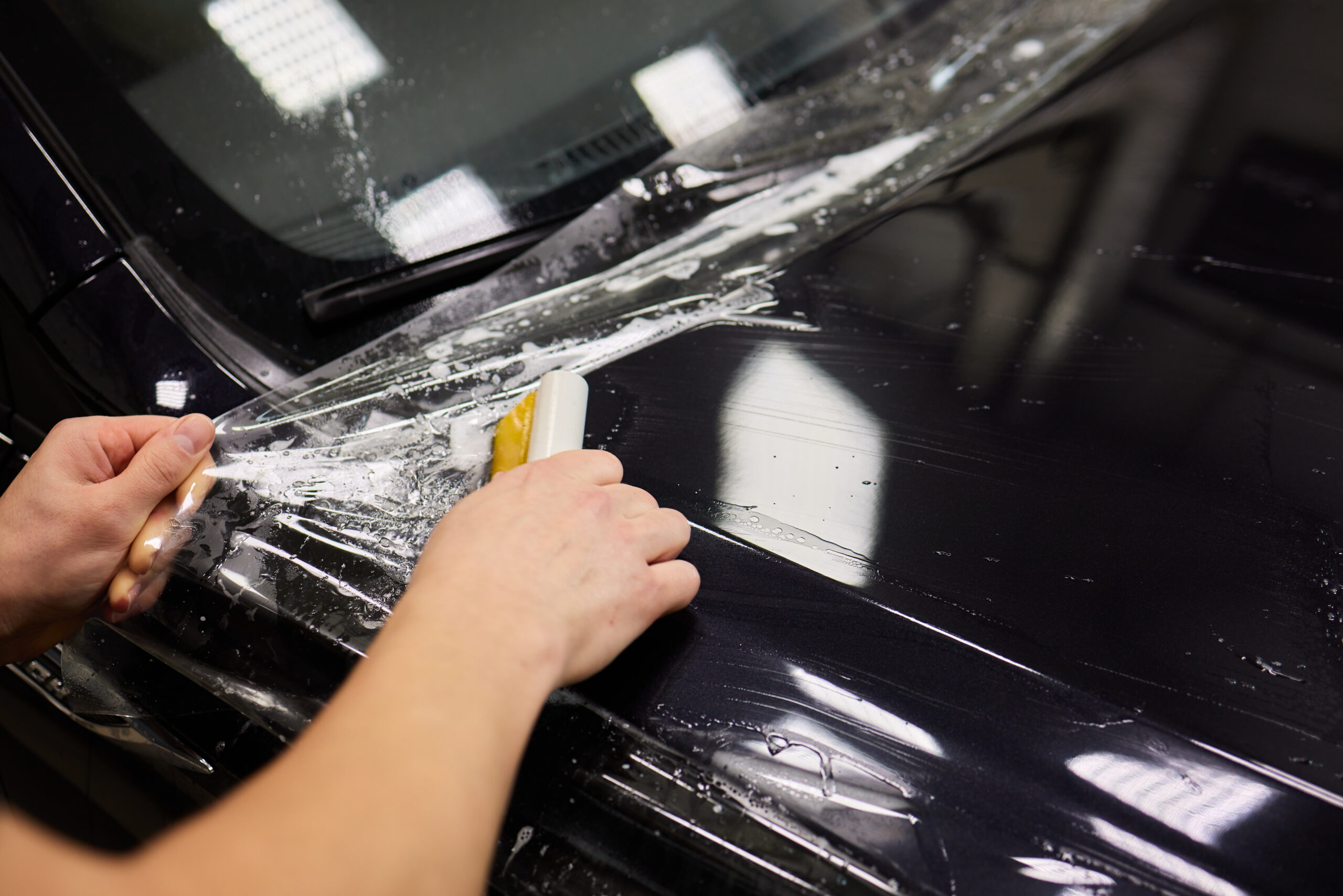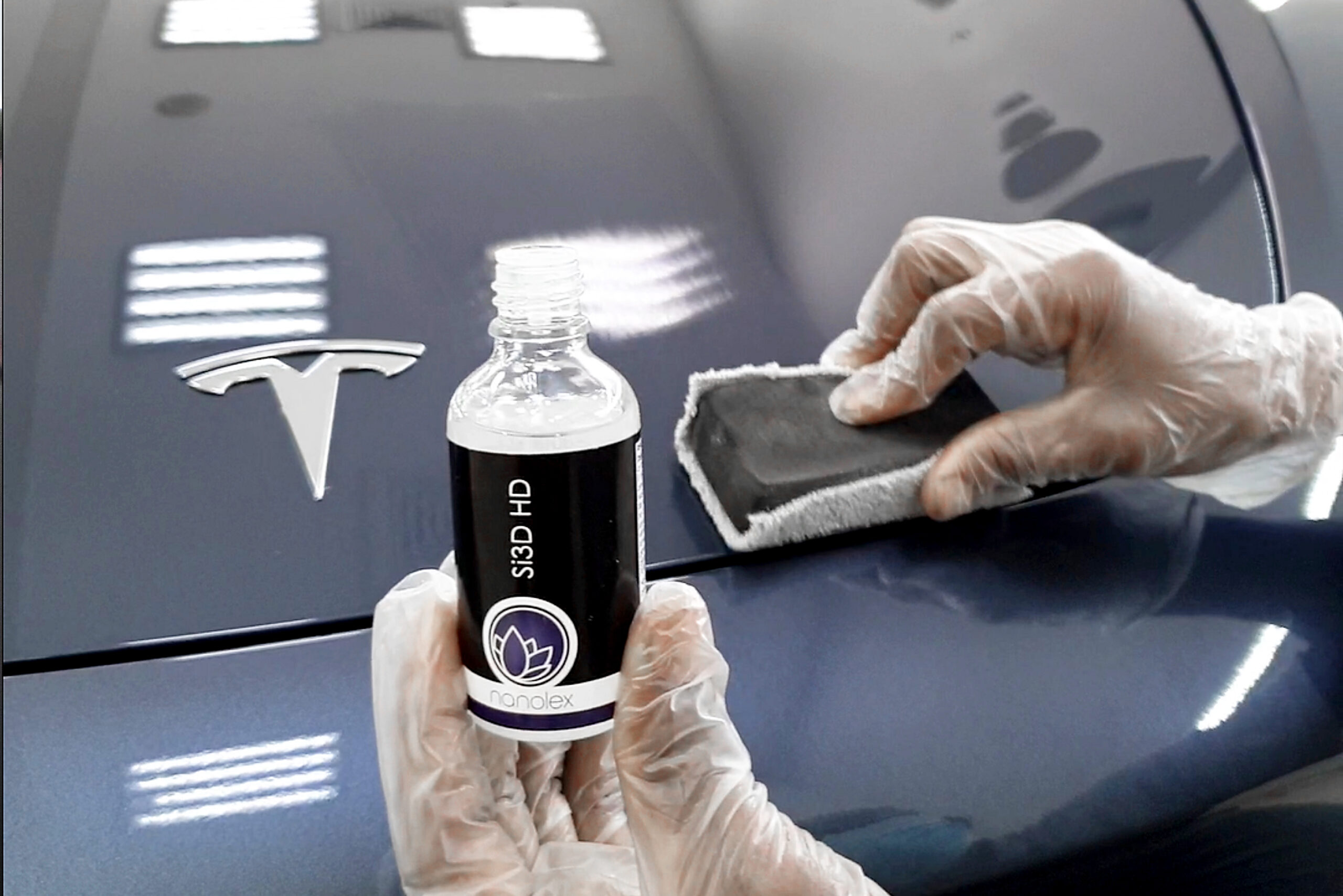
Desert Shield PPF & Ceramic Coating: Complete Dual Protection Guide
A professional, no‑nonsense explainer on why and when to layer Paint Protection Film with Ceramic Coating for maximum protection and gloss.
PPF vs Ceramic Coating - What Each One Does
Paint Protection Film (PPF)
A transparent, impact-resistant urethane layer placed on paint to physically stop rock chips, scratches, and abrasion. Best for front bumpers, hoods, fenders, mirrors, door edges, and high-impact zones.
Ceramic Coating
A liquid polymer that bonds to clear coat (and to PPF surfaces) creating a dense, glossy, hydrophobic surface that resists UV, chemical etching, and staining while making wash-downs faster.


Why Layer PPF and Ceramic Coating
- Physical + Environmental Shield: PPF handles impacts and abrasion, ceramic handles UV, oxidation, and chemical fallout.
- Self‑Healing + Easy Washing: Premium PPF topcoats self‑heal micro‑marring with heat. Ceramic adds slickness and water beading, reducing wash time.
- Higher Gloss and Clarity: Coating over PPF refines the finish and preserves optical clarity for longer.
- Long‑Term Value: Better retention of paint condition and resale appeal compared to using either product alone.
Pros and Cons of Combining
Pros
- Maximum coverage against chips, scratches, UV, and chemicals.
- Superior gloss and easier maintenance.
- Extended lifespan of both layers when maintained correctly.
Considerations
- Higher upfront investment than a single product.
- Requires professional application sequence and cure windows.
Longevity and Maintenance
Typical lifespans: PPF 5–10 years depending on environment and care. Ceramic Coating 2–4 years per layer depending on product and maintenance. When layered, the coating helps the film resist oxidation and surface staining, preserving clarity.
- Two‑bucket wash with pH‑neutral shampoo and high‑quality wash mitts.
- Avoid abrasive brushes and automated tunnel washes.
- Use microfiber drying towels and periodic decontamination safe for coated PPF.
- Inspect high‑impact zones quarterly; address film nicks early.
The Desert Shield Process
- Assessment and Prep: paint inspection, wash, decontamination, panel prep.
- PPF Application: precision templates, alignment, squeegee, wrapped edges where applicable, heat set.
- Cure Window: film sets before any coating work.
- Ceramic Coating: applied over PPF and exposed painted panels for a uniform gloss and hydrophobics.
- Final QC: inspection under multiple light sources, handover care guide.
Comparison: PPF vs Ceramic vs Combined
| Aspect | PPF Only | Ceramic Only | Combined |
|---|---|---|---|
| Rock Chips & Abrasion | Excellent | Poor | Excellent |
| UV & Oxidation | Good | Excellent | Excellent |
| Chemical Resistance | Good | Excellent | Excellent |
| Gloss & Slickness | Good | Excellent | Outstanding |
| Maintenance Effort | Moderate | Low | Low |
| Typical Warranty | 5–10 years | 2–4 years | Aligned to film + coating plan |
| Best Use | High‑impact zones | Full‑body protection from UV/chemicals | Front end + exposed panels for full coverage |
FAQs
Coat after the PPF is installed and cured. This ensures the coating bonds on top of the film and the exposed painted panels uniformly.
Yes. The affected panel can be re‑filmed and re‑coated locally, then blended during inspection.
We use coating products compatible with matte/satin films that preserve the intended sheen.
